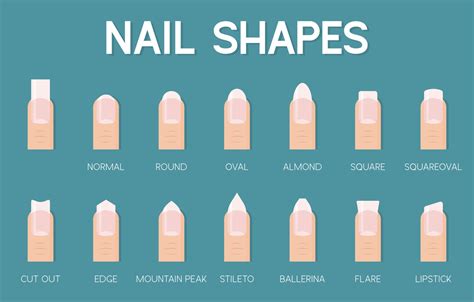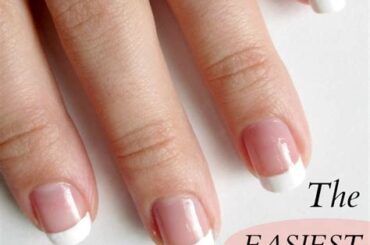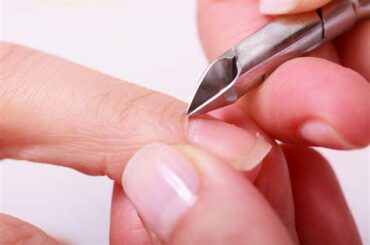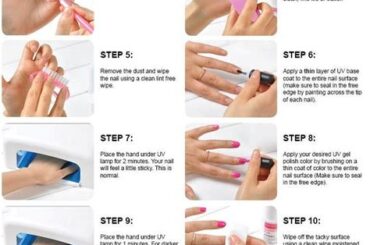Are you struggling to maintain strong and healthy nails? Understanding the different nail types is the first step in achieving beautiful and resilient nails. In this blog post, we will explore the various nail types and how to identify which one you have. From normal nail structures to common issues with nail health, such as dry, brittle, soft, weak, split, peeling, ridged, cracked, and damaged nails, we will discuss the causes and solutions for each. By the end of this post, you will have a better understanding of your nail type and be equipped with the knowledge to choose the right nail care routine for your specific needs. Let’s dive into the world of nail types and take the first step towards achieving healthier and stronger nails.
Introduction to Nail Types
Understanding the different nail types is essential in order to properly care for and maintain healthy nails. Each person has a unique nail type, which can impact the way their nails look and behave. By learning about the various nail types, individuals can better understand how to address specific concerns and issues related to their nails.
There are several nail types including dry, brittle, soft, weak, split, peeling, ridged, cracked, and damaged nails. Each type comes with its own set of characteristics, causes, and remedies. While some people may have naturally strong and healthy nails, others may struggle with weak, brittle, or damaged nails.
By familiarizing ourselves with the different nail types, we can gain insight into the potential causes of these issues and learn how to improve the health and appearance of our nails. Whether it’s implementing a new nail care routine or seeking professional guidance, understanding our nail type is the first step towards achieving healthier and more beautiful nails.
Throughout this blog post series, we will delve into each specific nail type in greater detail, providing valuable information on how to identify, address, and care for various nail concerns. By the end of this series, readers will have a comprehensive understanding of nail types and be equipped with the knowledge needed to maintain optimal nail health.
Identifying Your Nail Type
When it comes to nail care, one size does not fit all. It’s important to identify your nail type in order to properly care for and maintain the health of your nails. There are several different types of nails, each with their own unique characteristics and needs.
One way to identify your nail type is by looking at the shape and appearance of your nails. For example, if your nails are thin and flexible, you may have soft and weak nails. On the other hand, if your nails are thick and brittle, you may have dry and brittle nails.
Another way to identify your nail type is by paying attention to how your nails respond to different treatments and products. If your nails tend to peel or split easily, you may have split and peeling nails. If you notice ridges on your nails, you may have ridged nails.
By understanding and identifying your nail type, you can tailor your nail care routine to address your specific needs and concerns. Whether it’s choosing the right nail polish formula, adopting a specific nail care regimen, or seeking professional help, knowing your nail type is the first step towards achieving healthy and beautiful nails.
Understanding Normal Nail Structure
When it comes to nail health, understanding the normal structure of your nails is essential. Nails are made up of a protein called keratin, which is also found in the hair and the outer layer of the skin. They are formed in the nail matrix, the area under the cuticle, where new skin cells are made. As these cells grow and harden, they form the visible nail plate.
Normal nails have a pinkish-white color, indicating a healthy blood supply to the nail bed. The nail plate should be smooth, without any ridges, dents, or discoloration. The cuticle, a layer of skin at the base of the nail, acts as a seal to protect the nail matrix from bacteria and fungi.
Understanding the normal nail structure is important for recognizing any abnormalities or signs of potential health issues. Changes in nail color, texture, or shape can indicate underlying health problems, including nutritional deficiencies, infections, or systemic diseases.
By being aware of what constitutes a normal nail structure, individuals can better monitor the health of their nails and seek appropriate care or treatment when needed.
Common Issues with Nail Health
One of the most common issues that people face regarding nail health is nail fungus. Nail fungus, also known as onychomycosis, is a common condition that can affect both the fingernails and toenails. It is characterized by discoloration, thickening, and crumbling of the nail, and can be quite unsightly and uncomfortable. Nail fungus is often caused by exposure to warm, moist environments, such as locker rooms and public swimming pools, as well as by wearing tight-fitting shoes for extended periods of time.
Another common issue with nail health is ingrown nails. Ingrown nails occur when the edge of the nail grows into the skin, causing pain, redness, and swelling. Ingrown nails can be caused by improper nail cutting, wearing tight shoes, or injury to the nail. In severe cases, ingrown nails may become infected and require medical treatment.
Dry, brittle nails are also a prevalent issue for many people. Dry, brittle nails are characterized by peeling, splitting, and breakage, and can be caused by factors such as exposure to harsh chemicals, frequent hand washing, and the use of nail polish and polish remover. Additionally, underlying health conditions such as thyroid disease and malnutrition can also contribute to the development of dry, brittle nails.
Finally, nail biting is a common issue that can have a negative impact on nail health. Nail biting, also known as onychophagia, can lead to damage and infection of the nails and surrounding skin, as well as the transmission of harmful bacteria and viruses. Nail biting can be a difficult habit to break, but with patience and perseverance, it is possible to achieve healthy, beautiful nails.
The Characteristics of Dry and Brittle Nails
When it comes to nail health, it’s important to understand the different types of nails and the issues that can arise. One common issue that many people face is having dry and brittle nails, which can be quite bothersome and affect the overall appearance of the hands. Dry and brittle nails are typically characterized by a lack of moisture and flexibility, leading to a rough and easily breakable texture.
Those with dry and brittle nails often experience peeling, flaking, and an overall lack of resilience in their nails. In severe cases, the nails may even develop deep cracks and splits, making it painful and difficult to engage in everyday activities. These characteristics not only affect the appearance of the nails but also indicate an underlying issue with nail health that needs to be addressed.
Additionally, the cuticles surrounding dry and brittle nails may also be dry and tend to peel easily, further adding to the discomfort and unsightly appearance of the nails. It’s important to pay attention to these characteristics of dry and brittle nails in order to identify and address the root cause of the problem.
Understanding the characteristics of dry and brittle nails is the first step in finding the appropriate solutions and treatments to improve nail health. By recognizing these signs, individuals can take proactive steps to introduce proper nail care routines and seek professional advice to restore moisture and strength to their nails.
Exploring Soft and Weak Nail Types
Soft and weak nails are a common concern for many people, often causing frustration and discomfort. Soft nails can be easily damaged and are more prone to breaking, while weak nails may bend and tear easily. Understanding the characteristics of soft and weak nails is essential in order to properly care for and strengthen them.
Soft nails are often flexible and may lack the strength and rigidity of normal healthy nails. This flexibility can make them more susceptible to damage, such as bending or breaking. Weak nails, on the other hand, may be more prone to splitting, peeling, and developing ridges. These characteristics can be frustrating and impact the overall appearance and health of the nails.
There are several factors that contribute to soft and weak nails, including genetics, exposure to harsh chemicals, hormonal changes, and nutritional deficiencies. It’s important to identify the underlying cause in order to determine the most effective treatment and care routine. Additionally, adopting a gentle nail care routine and incorporating strengthening treatments and products can help improve the condition of soft and weak nails.
Exploring the various causes and solutions for soft and weak nails can provide valuable insight into how to properly care for and strengthen them. By understanding the characteristics and contributing factors, individuals can take proactive steps to improve the health and appearance of their nails.
Causes and Solutions for Split and Peeling Nails
Split and peeling nails can be quite annoying and often painful. There are several causes for this issue, including excessive exposure to water and harsh chemicals, which can weaken the nails and make them more prone to splitting and peeling. Additionally, nutritional deficiencies, such as low levels of iron, calcium, or vitamin A, can also contribute to the problem.
Another common cause of split and peeling nails is repetitive trauma, such as constantly using your nails to open things or perform tasks that put pressure on the nails. This can weaken the nails and lead to splitting and peeling. In some cases, underlying health conditions such as thyroid disease or psoriasis can also be the cause of this issue.
Fortunately, there are several solutions to address split and peeling nails. Using a moisturizing nail and cuticle oil can help to hydrate and strengthen the nails, reducing the likelihood of splitting and peeling. Additionally, wearing gloves when performing tasks that involve exposure to water and chemicals can protect the nails from damage. Making sure to maintain a healthy, balanced diet that includes adequate levels of nutrients necessary for nail health can also help to prevent split and peeling nails.
In some cases, it may be necessary to seek medical advice if the issue persists despite trying these solutions. A dermatologist or healthcare professional can help to identify any underlying health conditions that may be contributing to the problem, and provide targeted treatment to address the issue.
Recognizing and Treating Ridges on Nails
One common issue that many people face with their nails is the presence of ridges. Ridges on the nails can be both vertical and horizontal and can be caused by a variety of factors.
It’s important to recognize the different types of ridges and what they may indicate about your overall nail health. Vertical ridges, for example, are often a natural part of the aging process and may not indicate any serious issues. However, horizontal ridges, also known as Beau’s lines, can be a sign of more serious health problems such as malnutrition, diabetes, or a zinc deficiency.
When it comes to treating ridges on the nails, the first step is identifying the underlying cause. Ensuring that you have a balanced diet that includes essential vitamins and minerals can help improve the health of your nails. Additionally, using a moisturizing nail cream and avoiding harsh chemicals or excessive filing can also help promote nail health and reduce the appearance of ridges.
It’s always important to consult with a healthcare professional if you have concerns about the ridges on your nails, as they can help identify any underlying health issues and provide personalized treatment recommendations.
Cracked and Damaged Nails: Causes and Remedies
If you’re dealing with cracked and damaged nails, you’re not alone. Many people struggle with this common issue, which can be not only unsightly but also painful. There are a variety of factors that can contribute to cracked and damaged nails, and understanding the underlying causes can help you find the right remedies to improve the health of your nails.
One of the most common causes of cracked and damaged nails is excessive dryness. When the nails become dehydrated, they become more prone to cracking and breaking. Exposure to harsh chemicals and frequent hand washing can exacerbate this issue, leading to brittle nails that are more susceptible to damage.
In addition to dryness, underlying health issues such as fungal infections or nutritional deficiencies can also contribute to cracked and damaged nails. If you suspect that your nail issues may be related to a health condition, it’s important to consult with a healthcare professional for proper diagnosis and treatment.
When it comes to remedies for cracked and damaged nails, proper hydration is key. Using a nourishing nail oil or moisturizing nail cream can help to restore moisture to the nails and prevent further damage. It’s also important to minimize exposure to harsh chemicals and protect your nails from trauma by wearing gloves during activities that may put your nails at risk.
Choosing the Right Nail Care Routine for Your Nail Type
When it comes to maintaining healthy nails, it’s important to understand that not all nails are the same. Just as we have different skin types, our nails also have their own unique characteristics and needs. In order to keep your nails in optimal condition, it’s essential to choose a nail care routine that is tailored to your specific nail type.
One of the first steps in choosing the right nail care routine is identifying your nail type. Whether you have dry and brittle nails, soft and weak nails, or nails that are prone to splitting and peeling, understanding the unique attributes of your nails is crucial in determining the most effective care regimen.
Once you have determined your nail type, it’s important to pay attention to the ingredients in the nail care products you use. For example, if you have dry and brittle nails, you may want to look for products that are enriched with moisturizing ingredients such as shea butter or jojoba oil. On the other hand, if you have soft and weak nails, strengthening formulas containing ingredients like keratin and biotin may be more beneficial.
In addition to using the right products, it’s also important to consider other aspects of your nail care routine, such as filing and shaping techniques, frequency of manicures, and the use of nail treatments. By tailoring your nail care routine to your specific nail type, you can ensure that your nails remain strong, healthy, and beautiful.





